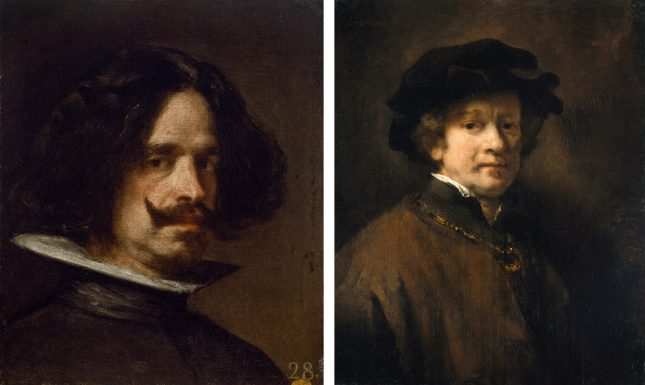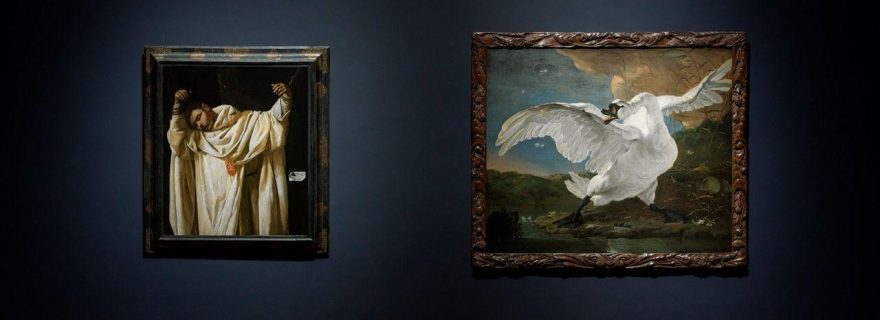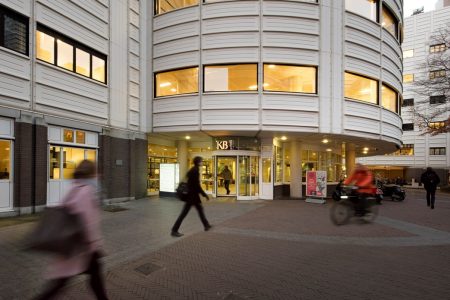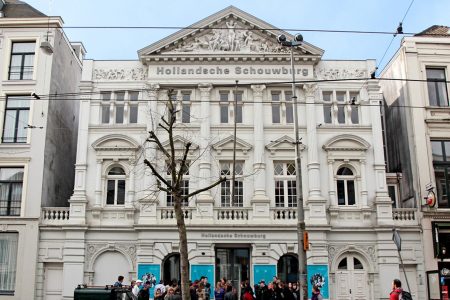Dutch and Spanish Masters in Amsterdam
An excursion to the Rembrandt-Velázquez exhibition at the Rijksmuseum with Professor Stijn Bussels.

The Dutch painter Rembrandt van Rijn (1606-1669) and the Spanish painter Diego Velázquez (1599-1660). What do these great masters have in common? The exhibition in the Rijksmuseum shows several paintings by these masters in pairs next to each other, related to themes such as faith, power and love. There are works by contemporaries like Vermeer, Hals and Murillo. Rembrandt and Velázquez are considered as the greatest artists in their countries during the seventeenth century, which was a time of great artistic activity in Spain as well as the Dutch Republic.

There was also huge tension between these countries because of the Eighty Years War (1568-1648), which was marked by religious conflict between the fervently Catholic Spanish monarchy and the emerging Protestant faith in the Netherlands. This immediately becomes clear in the first room, where the visitor is welcomed by Rembrandt’s painting The Standard-Bearer. Standard-bearers were important figures in the battle between Spain and the Netherlands. The religious tension is explored in the other two paintings in the first room. One depicts a Protestant church interior while the other depicts a lamb that symbolizes the suffering of Christ. Most visitors might expect to be confronted immediately with paintings by Rembrandt and Velázquez but it takes a few rooms before we finally see any paintings by the masters next to each other. However, the first room opens with titles on the walls that state ‘Dutch and Spanish Masters’, to signify that this exhibition is about other contemporary artists. What becomes visible in the paintings that are shown in the first room, is this tension between The Netherlands and Spain, which is of great importance to the narrative of the exhibition.

After visiting two smaller rooms that contain three or two paintings, the visitor is then overwhelmed by the third room. This room is very big and filled with many duo-paintings. Here the visitor is finally confronted with the first Rembrandt-Velázquez pair, which was worth the wait! There is a similarity in brushstrokes and use of earthly colours such as black, white and brown. However, there is a big difference between the scenes depicted by the masters, where the men in Rembrandt’s painting feel intruded by the presence of the artist, and the men in Velàzquez’s work just continue what they are doing. But both paintings portray a scene in a realistic style, in which someone is entering into the room, and the men react on this intrusion in different ways.

Rembrandt and Velázquez never met and in fact they never saw each other’s paintings – Velázquez may have seen one of Rembrandt’s many etchings but this is uncertain. Both artists were great innovators and although they never met various similarities can be discovered in their artworks, such as the use of colour and techniques.
The curators, Gregor Weber and Cèlia Querol Torello, have sought to convey a story and are clearly playing with the expectations of the visitor. This is achieved through the design of the exhibition, and not only through the combination of the artworks: for example, several walls direct the visitor’s gaze towards the artworks and the explanatory labels are distanced from the paintings to not distract from the viewing. The exhibition thus directs the visitors in a ways that most people may not realise.
The Rembrandt-Velázquez exhibition is an interesting one to visit, not only because of the comparisons between Rembrandt-Velázquez and other great Dutch and Spanish artists of the 17th century, but also to see how this exhibition was designed. This blog only addressed the first few rooms in the exhibition, the rest is for you to discover!
Amber van As is a first-year student of Arts, Media and Society with an interest in art, culture and media. Currently working in the Kunstmuseum in The Hague, part of the Kunstgang committee and the Excursion Committee of the Leidse Kunsthistorische Vereniging.





0 Comments